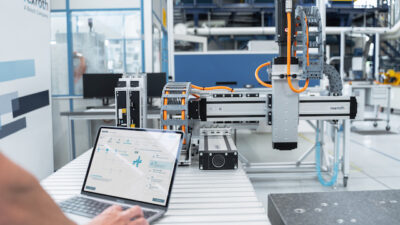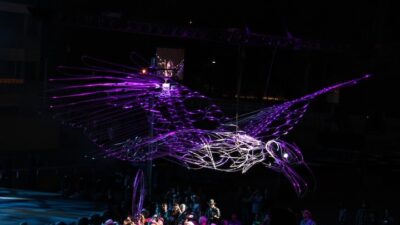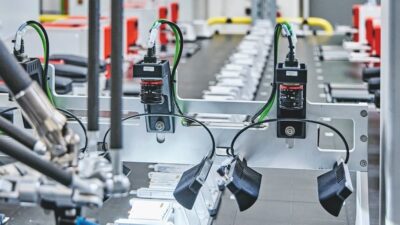G uidelines are never a substitute for good engineering practices and experience but they are better than proceeding down a trial-and-error learning path.
Guidelines for all positioner types
Positioners can reduce control valve deadband caused by friction. Most control valves without positioners, even those using ‘low friction’ packing material, may demonstrate a 5% deadband. Deadband greater than 1% can produce loop controllability problems. Use of a positioner can reduce deadband caused by friction to less than 1%.
Positioners can reduce the effects of frictional stick/slip. Control valves with significant stick/slip have poor performance as witnessed by a limit cycle graph (see CE, Oct. ’99 ). Limit cycle occurs when a valve first sticks and then jerks (slips) to a new position. Frequently the stick/slip action causes process variables to overshoot the setpoint. Control action reverses the signal to the control valve and the stick/slip action is repeated in the opposite direction. A positioner’s stem feedback can reduce stick/slip effects and maintain the process variable closer to the setpoint.
Split ranged control elements normally require positioners. Processes requiring extended flow rangeability may use two control valves. The first valve operates over the first half of the range. When the first valve is nearly 100% open, the control action begins to open the second valve. This is called control valve split ranging. When split ranging is performed on the pneumatic signal to the valve actuators, positioners on each valve are used to achieve full valve travel over the reduced input range. Most applications need a predictable overlap region in the middle of the signal to avoid a zone of no control. Positioners provide accuracy to ensure the correct overlap exists.
Positioners can be used to increase seating force and improve shutoff. A positioner will drive the output pressure to either zero or full supply pressure whenever the valve reaches a physical travel stop. An air-to-close actuator can use the full supply pressure to provide greater valve seat loading. Completely removing the air signal from air-to-open actuators allows the full force of the spring to load the valve seat.
Double acting actuators must have a positioner. All double acting piston actuators must have a positioner because the pressure on both sides of the piston must be precisely controlled. This can only be accomplished with the stem feedback in a positioner.
Positioners with feedback cams can be used to linearize control valve and process characteristics. Care should be used when applying cam linearization, generally cam linearization works only for slow (i.e., temperature) reacting process loops.
Two-stage pneumatic analog positioners have superior performance over single-stage pneumatic analog positioners. Positioners using a nozzle flapper and relay are called two-stage pneumatic analog positioners, and positioners using a spool valve are single stage pneumatic analog positioners. Single stage positioners offer the advantage of being very simple in mechanical design, but will not provide the performance of two-stage positioners. The nozzle flapper in two-stage positioners provides very high gain for accuracy, and the relay ensures high airflow for fast response. Fast response is especially important for fast processes such a liquid flow and pressure.
Controller tuning can be modified to stabilize a ‘nervous’ fast process with a positioner. Older guidelines stated that control valves in fast processes should not have positioners because the loops become too nervous and hard to control. That was true of pneumatic controllers because of their limited adjustment range.. Today’s microprocessor controllers provide broad tuning adjustment ranges. The controller gain can be set much lower than historical guidelines to stabilize fast processes and controller integral (reset) can remain fast to match the fast process.
Guidelines for digital positioners Intelligent digital positioners can extend capabilities and benefits of traditional analog positioners. Using digital communications, such as HART and FOUNDATION Fieldbus, digital positioners provide the features listed above, but can also provide the following additional benefits.
Calibration can be performed automatically and remotely. Digital positioners can perform the same zero and span calibration in a few minutes. A task that can take a few hours with non-digital positioners.
Characterization is provided on the output signal. The output signal can be characterized to match the system to achieve a linear process with constant gain. Digital positioner’s characterization benefit, over cam linearization described above, is the linearization performed on the output signal, not the feedback from the valve stem.
Digital noise filters can be applied. Filters should be applied carefully, but where appropriate a digital filter time constant can be applied to minimize the effects of excessive process noise. Users should remember filters add to process response times. Applying a filter will likely require retuning the control loop.
Positioners can generate alarms to the operator interface. Users can assign positioner-based alarms such as valve travel deviation from the input signal, travel beyond a certain point, and others. These alarms can be displayed on operator graphics.
Maintenance related data could be provided. Digital positioners can track valve reversal and total stem travel data that can be correlated with time and actual maintenance events to improve predictive maintenance forecasting.
Valve stroke speeds can be slowed. Applications where hydraulic ‘hammering’ might occur can use a digital positioner to slow the valve stroke.
Valve travel limits can be applied. Applications where a valve should never reach full close can have travel limits applied in digital positioners.
Installed valve performance testing can be automated. Digital positioners communicate well with control valve performance software. Following a pre-defined test, data curves and calculated results can be compared with previous tests to help determine if a control valve requires maintenance. Being able to compare control valve performance can save time and money during planned outages by focusing maintenance activities on the control valves needing maintenance.
Digital positioners are less susceptible to vibration influences. The solid state electronics in digital positioners provides a device with few moving parts and helps maintain positioner performance in high vibration installations.
Comments? E-mail [email protected]



